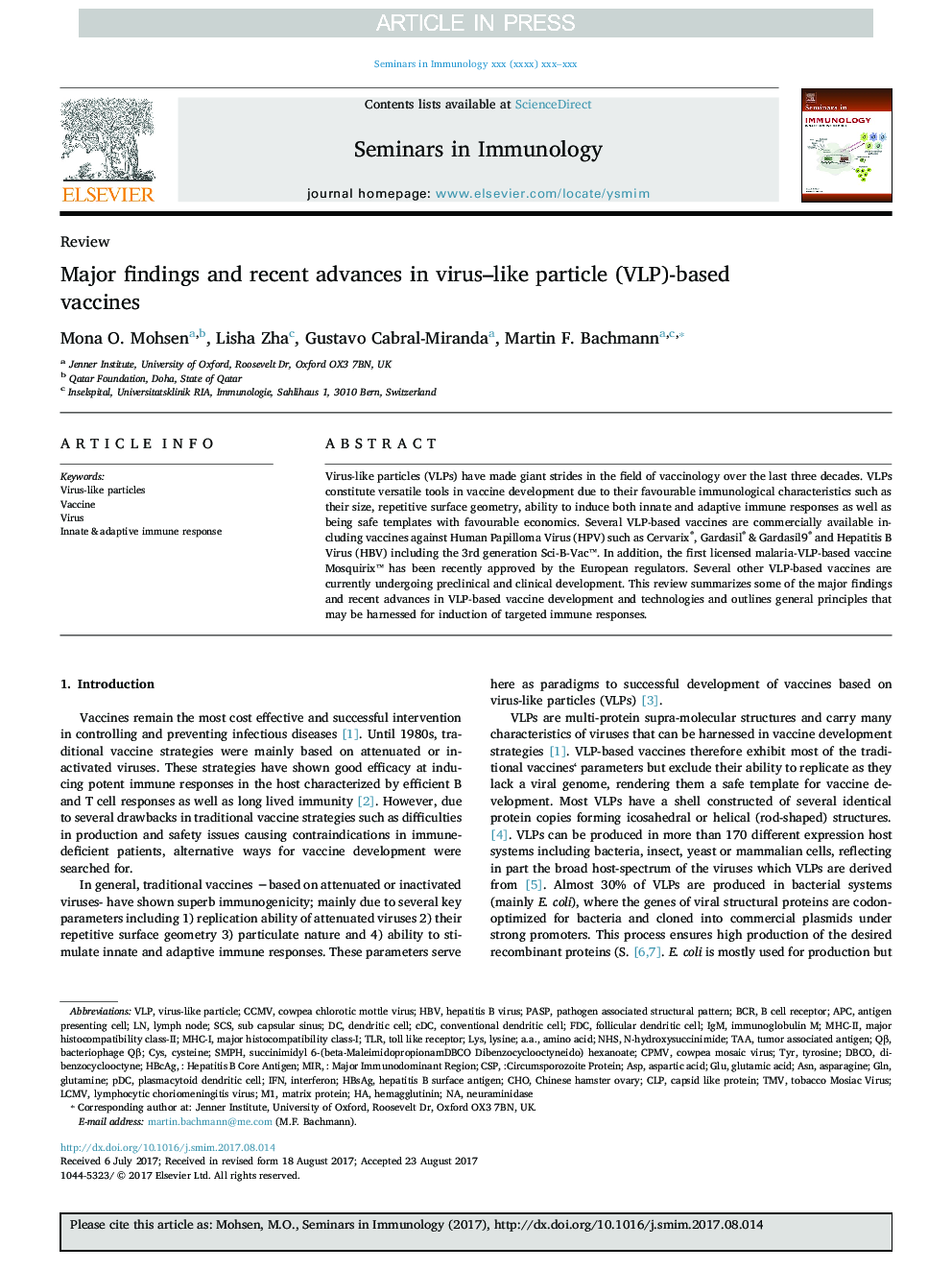| Article ID | Journal | Published Year | Pages | File Type |
|---|---|---|---|---|
| 8743716 | Seminars in Immunology | 2017 | 10 Pages |
Abstract
Virus-like particles (VLPs) have made giant strides in the field of vaccinology over the last three decades. VLPs constitute versatile tools in vaccine development due to their favourable immunological characteristics such as their size, repetitive surface geometry, ability to induce both innate and adaptive immune responses as well as being safe templates with favourable economics. Several VLP-based vaccines are commercially available including vaccines against Human Papilloma Virus (HPV) such as Cervarix®, Gardasil® & Gardasil9® and Hepatitis B Virus (HBV) including the 3rd generation Sci-B-Vacâ¢. In addition, the first licensed malaria-VLP-based vaccine Mosquirix⢠has been recently approved by the European regulators. Several other VLP-based vaccines are currently undergoing preclinical and clinical development. This review summarizes some of the major findings and recent advances in VLP-based vaccine development and technologies and outlines general principles that may be harnessed for induction of targeted immune responses.
Keywords
APCMHC-IHBcAgCLPMIRFDCLCMVTMVCysPASPSCsTLRNHSMHC-IIGLNcCMVHBsAgASNVLPTAAa.a.IgMBacteriophage QβN-hydroxysuccinimideCSPBCRASPCDCQβPDCCPMVAsparagineAspartic acidamino acidHepatitis B surface antigenTumor associated antigenglutamic acidimmunoglobulin MinterferonIFNChoChinese Hamster Ovarytoll like receptorTyrTyrosinevirus-like particlesVirus-like particleDendritic cellPlasmacytoid dendritic cellconventional dendritic cellfollicular dendritic cellantigen presenting cellCysteineLysineLYSneuraminidasehemagglutininHBVVaccineVirusCowpea chlorotic mottle viruscowpea mosaic virushepatitis B virusLymphocytic choriomeningitis virusmatrix proteinLymph nodeGluglutamineB cell receptor
Related Topics
Life Sciences
Immunology and Microbiology
Immunology
Authors
Mona O. Mohsen, Lisha Zha, Gustavo Cabral-Miranda, Martin F. Bachmann,
